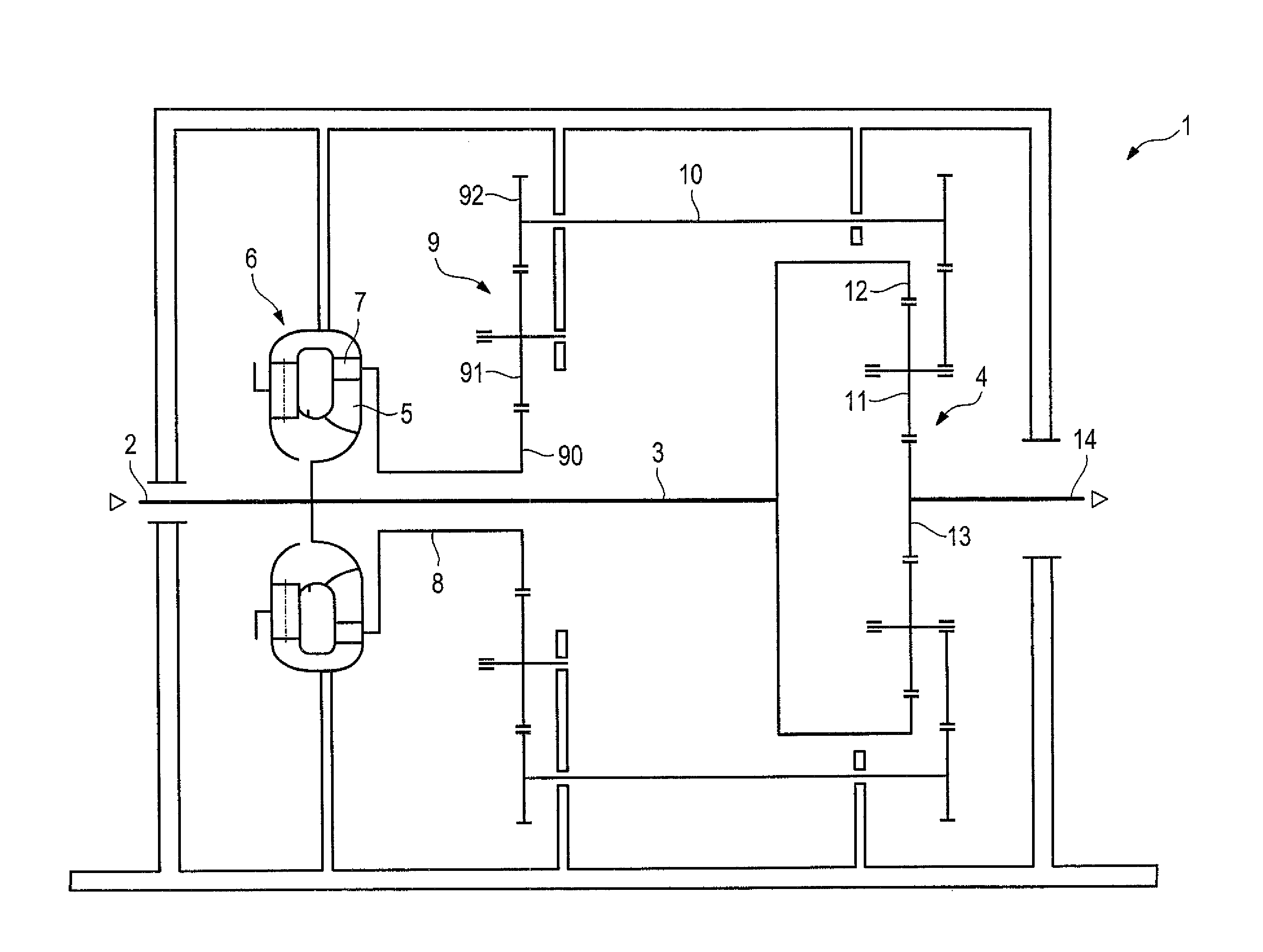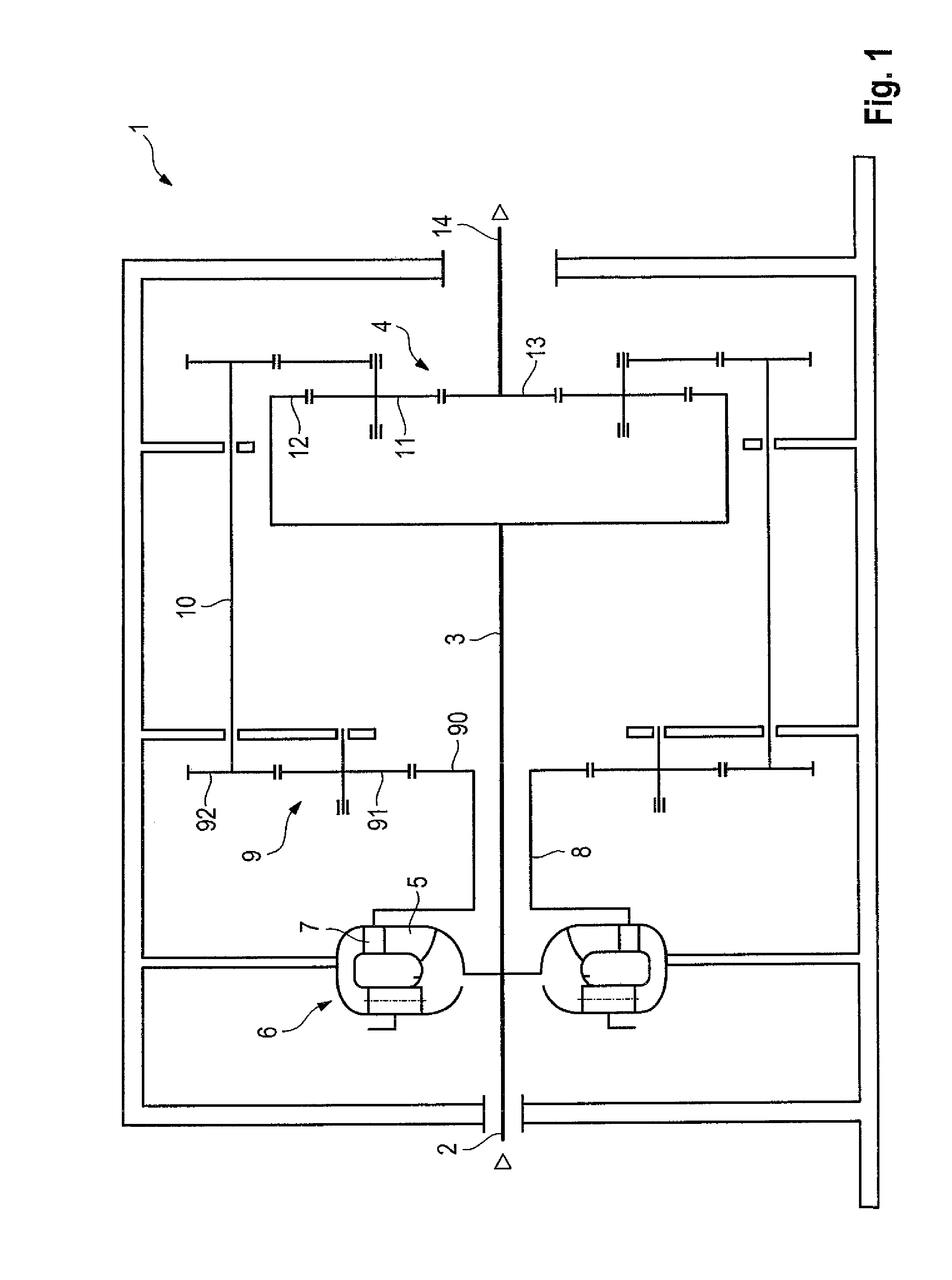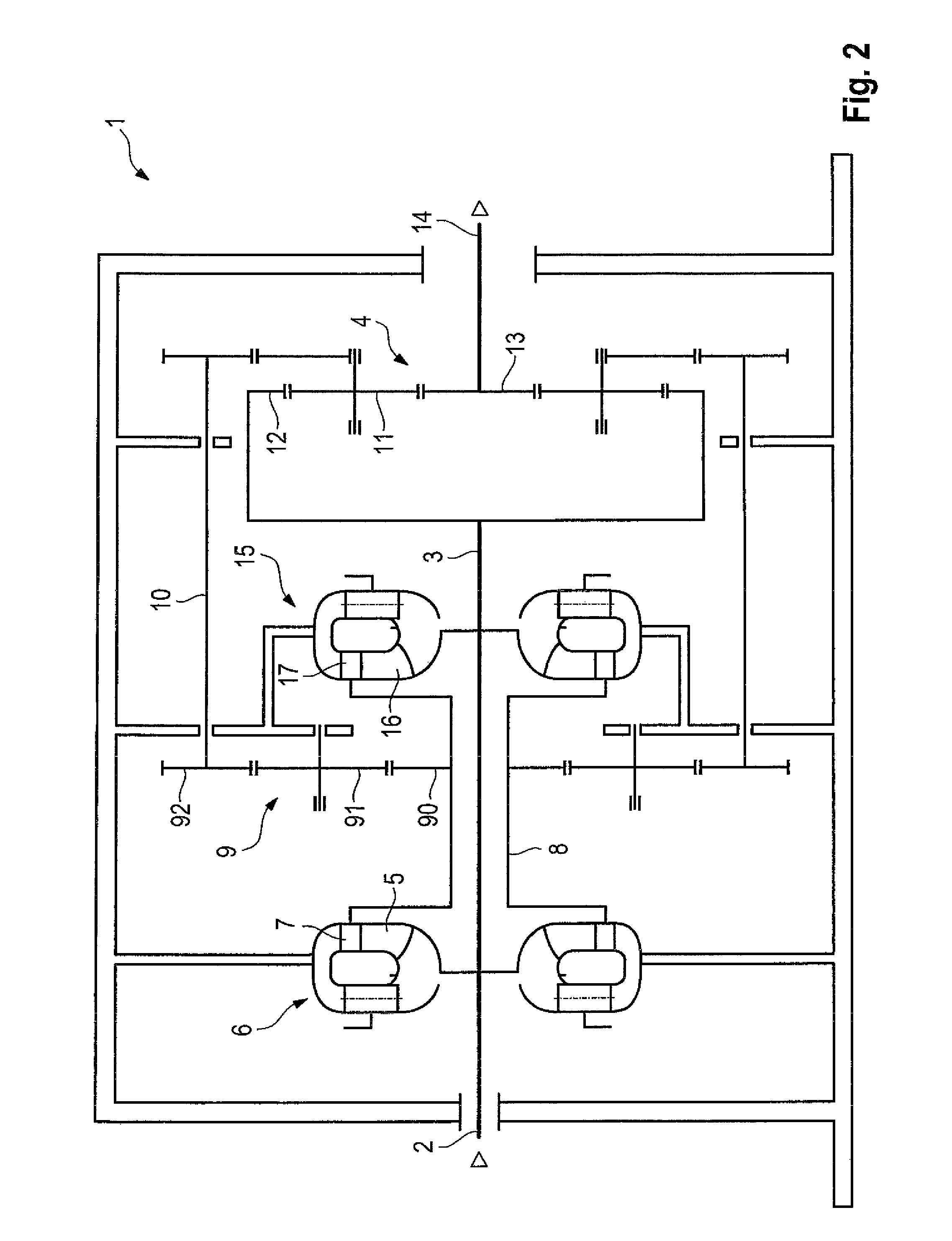Superimposed transmission having coupling shafts
- Summary
- Abstract
- Description
- Claims
- Application Information
AI Technical Summary
Benefits of technology
Problems solved by technology
Method used
Image
Examples
Embodiment Construction
[0039]FIG. 1 clearly shows a first embodiment of the superimposed transmission 1. The structure of the superimposed transmission 1 hence includes an input shaft 2, which is connected to a intermediate shaft 3 (typically formed as a single-part with the input shaft 2) with a differential gear 4 on the one hand and the pump wheel 5 of a hydrodynamic converter 6 on the other hand. A section of the power injected into the transmission 1 over the input shaft 2 is branched off using a turbine wheel 7 of the hydrodynamic converter 6. This power is conveyed to a transmission 9 over the turbine wheel 8, which is designed as a spur gear transmission in a preferred manner. In the illustrated embodiment the spur gear transmission 9 hence shows a central toothed gear 90, which will be designed typically as a hollow wheel using the intermediate shaft 3 going therethrough. Said hollow wheel is connected to the turbine wheel 8 and consequently to the turbine 7 and drives two further toothed gears 9...
PUM
 Login to View More
Login to View More Abstract
Description
Claims
Application Information
 Login to View More
Login to View More - R&D
- Intellectual Property
- Life Sciences
- Materials
- Tech Scout
- Unparalleled Data Quality
- Higher Quality Content
- 60% Fewer Hallucinations
Browse by: Latest US Patents, China's latest patents, Technical Efficacy Thesaurus, Application Domain, Technology Topic, Popular Technical Reports.
© 2025 PatSnap. All rights reserved.Legal|Privacy policy|Modern Slavery Act Transparency Statement|Sitemap|About US| Contact US: help@patsnap.com



